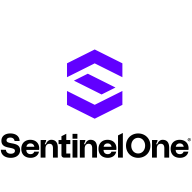


SentinelOne Singularity Complete and Microsoft Defender for Cloud are key players in cloud security, with SentinelOne benefiting from its advanced automated threat detection and rollback features.
Features: SentinelOne Singularity Complete excels with its advanced machine learning for automated threat detection, rollback functionality to instantly reverse ransomware attacks, and robust endpoint protection even against sophisticated threats. Microsoft Defender for Cloud integrates seamlessly with other Microsoft products, offering holistic security oversight and comprehensive policy management across cloud environments.
Room for Improvement: SentinelOne users express a need for improved agent updates, better customization of reports, and more transparent communication regarding product updates. Microsoft Defender for Cloud faces challenges with cost complexity and lacks certain visibility, especially in multi-cloud environments, while its alert severity levels require fine-tuning for enhanced accuracy.
Ease of Deployment and Customer Service: SentinelOne Singularity Complete offers swift deployment across diverse environments and is applauded for its responsive support team, although inconsistencies in technical support have been noted. Microsoft Defender for Cloud ensures seamless deployment across various cloud platforms, yet some users report lag in support responsiveness, despite satisfactory integration with broader Microsoft services.
Pricing and ROI: SentinelOne is recognized for its competitive pricing relative to comprehensive security features, with simple licensing and a notable potential ROI from reduced incident costs. Microsoft Defender for Cloud, though comprehensive, is perceived as costly, particularly for SMBs, with a complex pricing model. Both solutions provide strong value, but cost considerations may sway SMBs towards SentinelOne.
The detailed information PingSafe gives about how to fix vulnerabilities reduces the time spent on remediation by about 70 to 80 percent.
After implementing SentinelOne, it takes about five to seven minutes.
Cloud Native Security does offer ROI.
Defender proactively indexes and analyzes documents, identifying potential threats even when inactive, enhancing preventative security.
Identifying potential vulnerabilities has helped us avoid costly data losses.
The biggest return on investment is the rapid improvement of security posture.
Since then, I have not faced any intrusions, which is one reason I chose SentinelOne over ESET.
We have not faced any attacks since we implemented it.
It has absolutely helped reduce our organizational risk.
When we send an email, they respond quickly and proactively provide solutions.
They took direct responsibility for the system and could solve queries quickly.
Having a reliable team ready and willing to assist with any issues is essential.
Since security is critical, we prefer a quicker response time.
The support team was very responsive to queries.
They understand their product, but much like us, they struggle with the finer details, especially with new features.
They do a great job of figuring out the problem and pointing you to generic documentation or working with you to fine-tune a solution.
We are using the automated email process for support, and they respond within an hour or two hours sometimes.
A chat service would be beneficial.
I would rate it a 10 out of 10 for scalability.
Scalability is no longer a concern because Cloud Native Security is a fully cloud-based resource.
I would rate the scalability of PingSafe 10 out of 10.
We are using infrastructure as a code, so we do not have any scalability issues with Microsoft Defender for Cloud implementation because our cloud automatically does it.
It has multiple licenses and features, covering infrastructures from a hundred to five hundred virtual machines, without any issues.
Defender won't replace our endpoint XDR, but it will likely adapt and support any growth in the Microsoft Cloud space.
It's all auto-scale and auto-categorized, configuring automatically.
The tool's built-in automation for deploying the agents works well for large infrastructures like mine.
SentinelOne Singularity Complete is very scalable.
It's a reliable solution that the organization is increasingly adopting for its robust features and security.
We contacted Cloud Native Security, and they addressed it in a day.
The only downtime we had was when switching from V1 to V2 but it was smooth.
Defender's stability has been flawless for us.
Microsoft Defender for Cloud is very stable.
Microsoft sometimes changes settings or configurations without transparency.
It has caused problems with interoperability between third-party tools, which could lead to entire servers crashing or specific tools failing.
This indicates room for improvement in stability when interacting with other solutions.
Initially, there were issues, particularly on the management side, but now the console is much more stable.
If they can merge Kubernetes Security with other modules related to Kubernetes, that would help us to get more modules in the current subscription.
As organizations move to the cloud, a cloud posture management tool that offers complete cloud visibility becomes crucial for maintaining compliance.
I would also like to see Cloud Native Security offer APIs that allow us to directly build dashboards within the platform.
Microsoft, in general, could significantly improve its communication and support.
It would be beneficial to streamline recommendations to avoid unnecessary alerts and to refine the severity of alerts based on specific environments or environmental attributes.
The artificial intelligence features could be expanded to allow the system to autonomously manage security issues without needing intervention from admins.
The only thing that prevented the attack from succeeding was a free version of Malwarebytes.
Providing a single pane of visibility for the end user would be beneficial.
It's challenging to prevent a user from manipulating their privileges or someone else's of others, and it's difficult to control what users can access at the organizational level.
I believe the enterprise version costs around $55 per user per year.
There are some tools that are double the cost of Cloud Native Security.
I recall Cloud Native Security charging a slightly higher premium previously.
Every time we consider expanding usage, we carefully evaluate the necessity due to cost concerns.
We appreciate the licensing approach based on employee count rather than a big enterprise license.
Microsoft Defender for Cloud is pricey, especially for Kubernetes clusters.
If you want protection, you have to pay the price.
There are other products that are less expensive, but I tell my clients that in security, they cannot cut corners or look for the cheapest solution.
Reputation and quality are important, but especially in today’s economy, price is a significant factor.
This helps visualize potential attack paths and even suggests attack paths a malicious actor might take.
The infrastructure-as-code feature is helpful for discovering open ports in some of the modules.
This tool has been helpful for us. It allows us to search for vulnerabilities and provides evidence directly on the screen.
The most valuable feature for me is the variety of APIs available.
This feature significantly aids in threat detection and enhances the user experience by streamlining security management.
The most valuable feature is the recommendations provided on how to improve security.
I have an advanced app providing visibility of all my endpoints, which was not the case before.
SentinelOne has a feature to decommission automatically, which has been fantastic.
There's also automation that gives my team free time, preventing them from having to look for every alert.
| Product | Market Share (%) |
|---|---|
| Microsoft Defender for Cloud | 14.8% |
| Wiz | 15.9% |
| AWS GuardDuty | 13.2% |
| Other | 56.099999999999994% |
| Product | Market Share (%) |
|---|---|
| SentinelOne Singularity Complete | 5.7% |
| CrowdStrike Falcon | 10.3% |
| Microsoft Defender for Endpoint | 9.8% |
| Other | 74.2% |



| Company Size | Count |
|---|---|
| Small Business | 46 |
| Midsize Enterprise | 20 |
| Large Enterprise | 53 |
| Company Size | Count |
|---|---|
| Small Business | 26 |
| Midsize Enterprise | 7 |
| Large Enterprise | 45 |
| Company Size | Count |
|---|---|
| Small Business | 82 |
| Midsize Enterprise | 45 |
| Large Enterprise | 76 |
SentinelOne Singularity Cloud Security offers a streamlined approach to cloud security with intuitive operation and strong integration capabilities for heightened threat detection and remediation efficiency.
Singularity Cloud Security stands out for its real-time detection and response, effectively minimizing detection and remediation timelines. Its automated remediation integrates smoothly with third-party tools enhancing operational efficiency. The comprehensive console ensures visibility and support for forensic investigations. Seamless platform integration and robust support for innovation are notable advantages. Areas for development include improved search functionality, affordability, better firewall capabilities for remote users, stable agents, comprehensive reporting, and efficient third-party integrations. Clarity in the interface, responsive support, and real-time alerting need enhancement, with a call for more automation and customization. Better scalability and cost-effective integration without compromising capabilities are desired.
What are SentinelOne Singularity Cloud Security's standout features?SentinelOne Singularity Cloud Security is deployed in industries needing robust cloud security posture management, endpoint protection, and threat hunting. Utilized frequently across AWS and Azure, it assists in monitoring, threat detection, and maintaining compliance in diverse environments while providing real-time alerts and recommendations for proactive threat management.
Microsoft Defender for Cloud is a comprehensive security solution that provides advanced threat protection for cloud workloads. It offers real-time visibility into the security posture of cloud environments, enabling organizations to quickly identify and respond to potential threats. With its advanced machine learning capabilities, Microsoft Defender for Cloud can detect and block sophisticated attacks, including zero-day exploits and fileless malware.
The solution also provides automated remediation capabilities, allowing security teams to quickly and easily respond to security incidents. With Microsoft Defender for Cloud, organizations can ensure the security and compliance of their cloud workloads, while reducing the burden on their security teams.
SentinelOne Singularity Complete provides AI-driven threat detection and response with features like ransomware protection and rollback, offering endpoint protection with minimal system impact and deep forensic analysis.
SentinelOne Singularity Complete combines machine learning and artificial intelligence to offer robust endpoint protection. It delivers real-time insights and advanced threat detection through seamless integration with third-party tools, allowing for efficient endpoint management. With an emphasis on user-friendliness, it ensures reduced false positives. Room for improvement includes better integration options, enhanced reporting, and more precise analytics to tackle false positives. Users seek improved interoperability with systems and comprehensive support for legacy systems.
What are the key features of SentinelOne Singularity Complete?Organizations from industries like finance, healthcare, and technology deploy SentinelOne Singularity Complete to safeguard endpoints such as PCs, servers, and virtual machines. Equipped with EDR, it effectively replaces traditional antivirus systems and integrates with cloud technology for real-time security insights.
We monitor all Cloud Workload Protection Platforms (CWPP) reviews to prevent fraudulent reviews and keep review quality high. We do not post reviews by company employees or direct competitors. We validate each review for authenticity via cross-reference with LinkedIn, and personal follow-up with the reviewer when necessary.